Windows 11 comes with a new transparency effect in its UI. If you don’t like it, you can turn it off easily. In this guide, we show you multiple ways to turn on or turn off the Transparency effect in Windows 11. You can enable or disable Transparency using Personalization Settings, Accessibility settings or Registry Editor,
To make Windows much more beautiful and add fluid nature, Microsoft added transparent effects to its user interface in Windows 11. They look great in colors, especially when we use colorful backgrounds for desktops. The taskbar and the context menu look transparent, having shades of background color in them. Their color changes as per the background color applied to the desktop. If you are searching for a way to turn them off, we have two solutions. Let’s see what they are and how you can turn off transparency in Windows 11.
How do I enable Transparency in Windows 11?
The transparency effects are turned on by default on Windows 11. If you have turned them off, you can turn them back on the same way you turned them off via Personalization settings or Accessibility settings in the Windows Settings app.
How to Turn Off Transparency in Windows 11 via Personalization Settings
To turn off transparency on Windows 11 using Personalization settings:
- Right-click on the desktop
- Select Personalize
- Personalization settings will open
- Click on the Colors tab
- Toggle the Transparency effects switch Off
If we go into the details of the process, right-click on the desktop of your Windows 11 and select Personalize in the context menu.
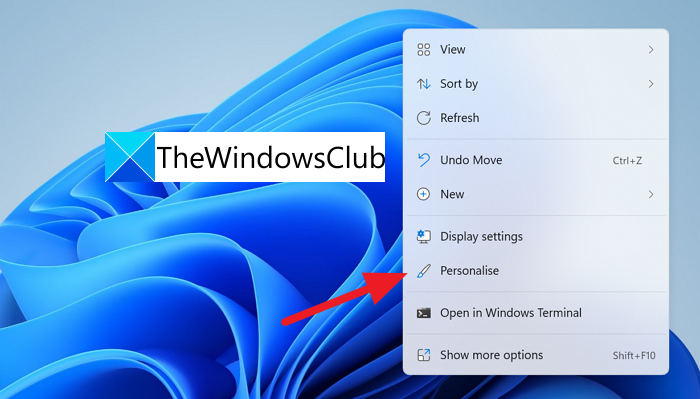
It will open Personalization settings. Click on the Colours tab among the Personalization options.
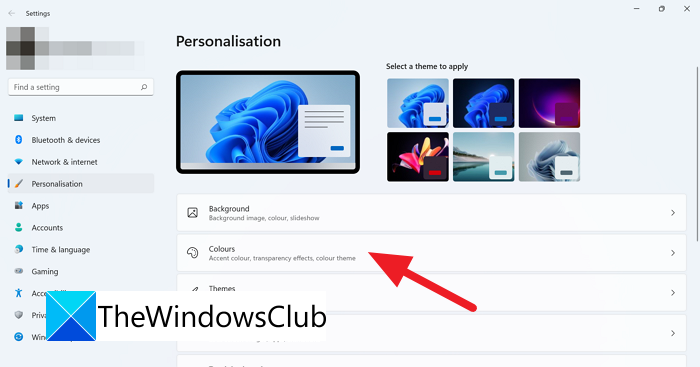
It will take you to the Colours personalization page. On that page, you can see Transparency effects with a toggle switch at its corner. Toggle that switch off to turn off the transparency effects.

The changes will affect the UI as soon as you toggle it off.
Disable Transparency in Windows 11 via Accessibility Settings
To disable transparency on Windows 11 via Accessibility settings:
- Open Settings app
- Click on Accessibility
- Then click on the Visual effects tab
- Locate Transparency effects.
- Toggle the Transparency effects button off
Let’s get into the details of the process.
Open the Settings app from the Start menu or using the Win+I shortcut on the keyboard. In the Settings window, click on Accessibility in the left-side menu.
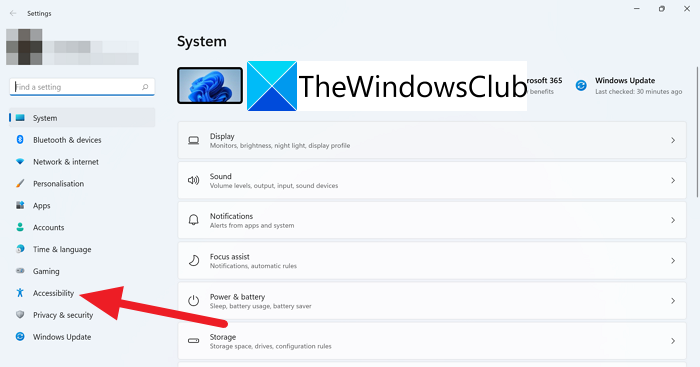
In the Accessibility options, select the Visual effects tab to see various settings of effects that run in the Windows user interface.
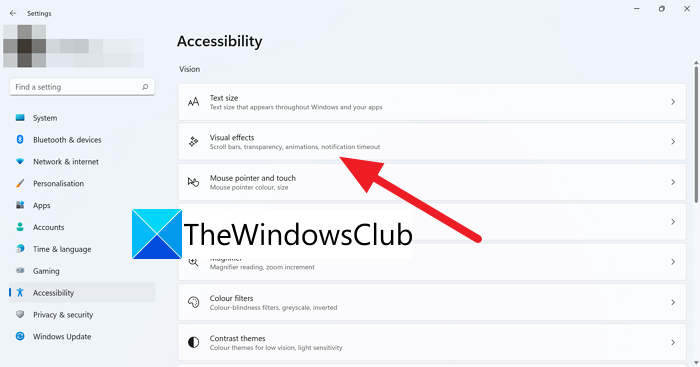
In the Visual effects settings, you can see Transparency effects.
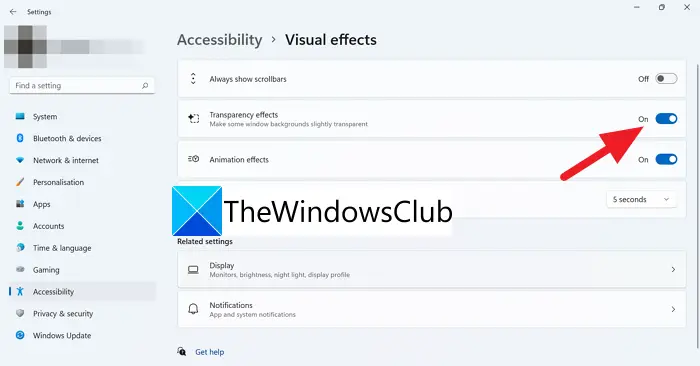
Turn the toggle button off beside Transparency effects to turn off transparency.
2] Enable or Disable Transparency using Registry Editor
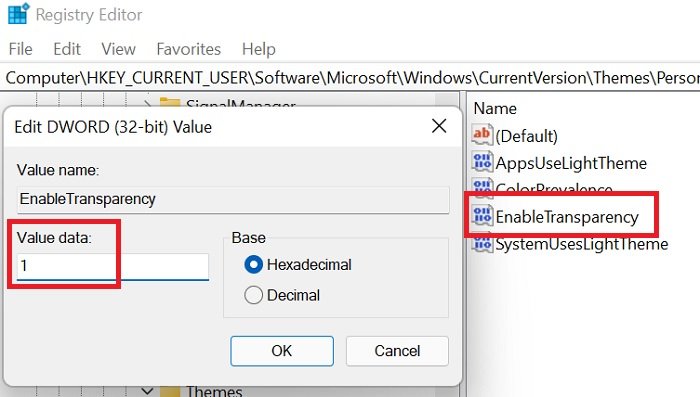
The procedure to enable or disable Transparency effects through the Windows Registry Editor is as follows:
Press the Windows key and the R button together to open the Run window.
In the Run field, type the command REGEDIT and hit Enter to open the Registry Editor window.
If it asks for administrator permissions, please click on Yes.
Now, go to the following Registry Editor path:
HKEY_CURRENT_USER\Software\Microsoft\Windows\CurrentVersion\Themes\Personalize
In the right-pane, you would find the entry EnableTransparency. Double-click on it.
The Value Data would normally be 1 which means transparency is enabled. To disable transparency, you can change the value data to 0.
These are the ways using which you can turn off transparency on Windows 11.
TIP: See this post if Transparency Effect is not working in Windows 11/10.
Does transparency affect the performance of Windows 11/10?
No, transparency effects do not affect the performance of your PC noticeably. The effects just add a new look to the Taskbar and context menu.
Why should you enable or disable transparency effects?
The benefit of enabling transparency effects isn’t just that it adds to the aesthetics, but the effect allows you to glimpse what is open behind the window. The benefit of disabling the transparency effects is that it improves system performance. For a system with low RAM, it is advisable to disable the transparency effects.
How do I remove transparency effects for specific components only?
In many cases, users might not want to remove all the transparency effects but only a few of them. This is possible too. Removing transparency is a subset of Performance options.
So, you can access further customization as follows: Search for “performance” in the Windows search bar and select Adjust the appearance and performance of Windows.
Here you will find options to enable and disable transparency for specific components. Eg. You could uncheck the box associated with Show translucent selection rectangle.
Related Read: How to pin any app to the Taskbar in Windows 11.
Leave a Reply